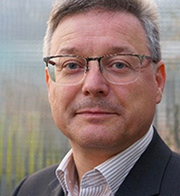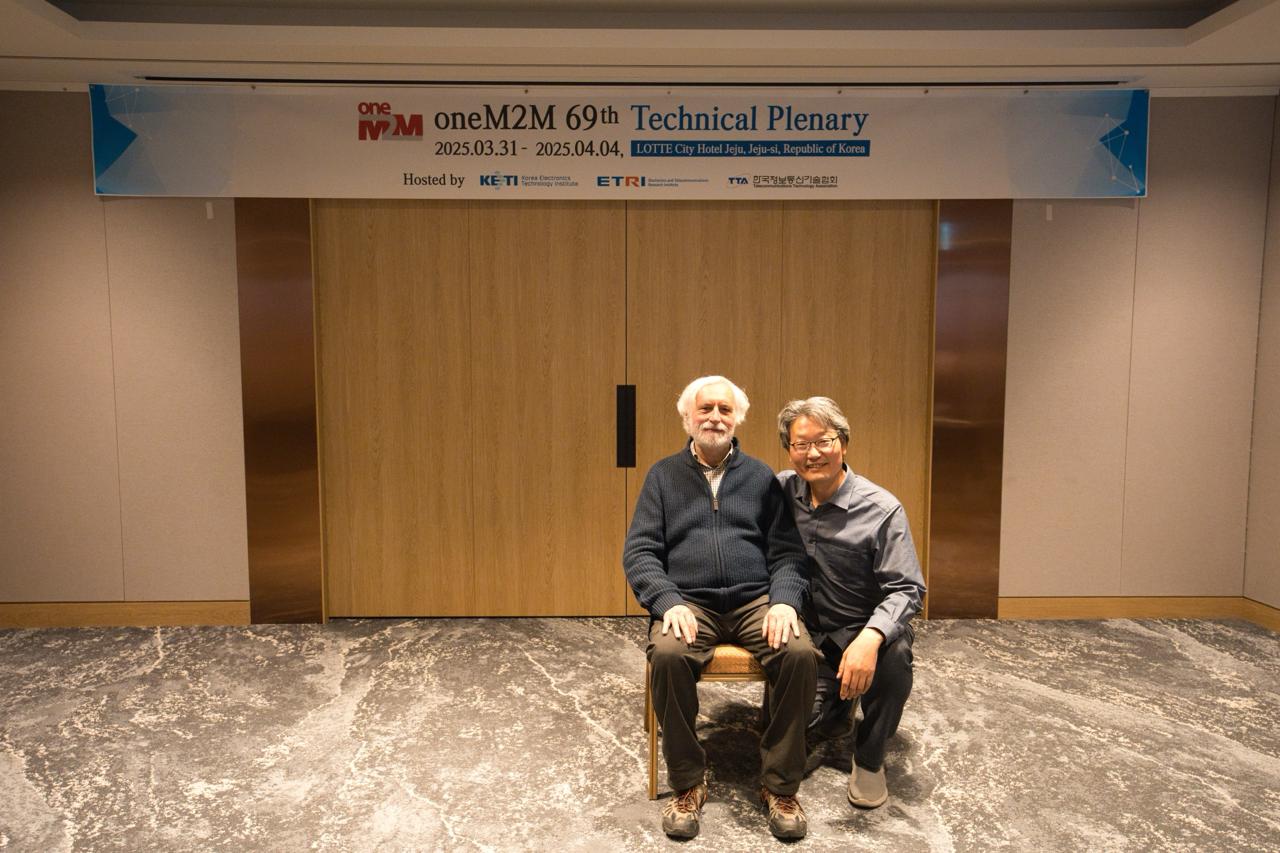
April 2025 - In this interview, Roland Hechwartner summarizes the latest developments from oneM2M’s 69th Technical Plenary. In addition to chairing oneM2M’s Technical Plenary (TP), Roland is responsible for the coordination of the overall management of the technical work within the TP and its Working Groups (WGs). He is also a representative of Deutsche Telekom (DT).
Q: Would you begin with an overview of the key developments at TP#69?
RH: We held TP#69 on the island of Jeju in South Korea from March 31 to April 4, 2025. Our hosts were the Korea Electronics Technology Institute (KETI), the Electronics and Telecommunications Research Institute (ETRI), and the Telecommunications Technology Association (TTA). The event was held through the "CitiVerse Standard Research Center" initiative which is supported by S. Korea’s Ministry of Science and ICT, and the Information and Communication Planning and Evaluation Agency (IITP).

The TP activities focused heavily on progressing organizational and technical specification activities that are the foundations for standardization. At the opening plenary, members re-elected Massimo Vanetti, (Small Business Standards) by acclamation as the chair of the Requirements and Domain Models Group working group (RDM). This will be his second, two-years term. The RDM collects and documents use cases that are relevant for oneM2M, including both domain-specific and cross-domain ones. These are the basis for identifying and specifying service and system requirements, including interworking aspects to other systems. The scope of RDM study items involves an aggregation and analysis of requirements to identify commonalities or repeated patterns that are ripe for standardization.
Within the oneM2M framework, examples include information and data models, ontologies to support harmonization, and interworking with vertical domain technologies to enable cross domain data exchange.
At the closing plenary session, there was an opportunity to review progress over the week and the status for Release 5. To assist with my TP coordination responsibilities, TP attendees clarified which work items will meet the Release 5 timeline with normative work, or informative deliverables i.e., Technical Reports. The target date for Release 5 finalization is EoY 2025 with eventual publication by Q1 2026. Some work items were moved to Release 6. This release is tentatively planned for finalization by EoY 2027.
Q: In addition to these activities, what were the main developments in the oneM2M Working Groups?
RH: Massimo Vanetti chaired the Requirements & Domain Models (RDM) working Group. Their meeting sessions focussed on the work related to Release 5. The main progress to report was on the TS‑0023 on SDT based Information Model & Mapping for Vertical Industries. Additionally, there was also progress on the TR‑0069 Enablement of IoT in the metaverse. This TR will eventually lead to normative changes and additions to release 6 of oneM2M.
Peter Niblett (IBM) chaired meetings of the System Design & Security (SDS) working group. Their work focused on changes that were agreed for TS‑0001 Functional Architecture and TS‑0004 Service Layer Core Protocol. Nearly all input was for release 5.
Within the SDS group, work was also progressed on several work items (Wis). These include WI‑100 (oneM2M and SensorThings API), WI‑105 (System enhancements to support AI capabilities), WI‑119 (Integrating NGSI-LD API in oneM2M), and the recently approved WI‑121 (oneM2M Robot Operating System interworking). For this last WI, members agreed on a very early set of contributions which provide an overview of ROS (Robot Operating System) in the Technical Report entitled “oneM2M‑ROS Interworking”. Recognizing the importance of this topic, KETI participants are leading this development and its relationship to the complementary technologies such as digital twins, metaverse, IoT, and AI.
JaeSeung Song (Sejong University) chaired the Testing & Developers Ecosystem (TDE) working group, standing in for Bob Flynn who was not available to participate in the meeting. Working group participants presented and discussed the continued progress and enhancements to a git-based specification development process. Within oneM2M, and other standardization bodies, participants face a heavy document-management workload. The git process we are using in oneM2M adapts the git, distributed version control system that is widely used in the software development industry. We have extended this with an ETSI-run GitLab instance, offering collaborative development features, community engagement, and integrated DevOps capabilities. The system enables a high degree of automation including syntax checks of contributions. As a result, we avoid the burden of manually handling documents and minimize errors.
There was also a discussion in the TDE on the planning of two future hackathon events. For one of these, KETI is preparing an international oneM2M Hackathon like the event in 2024. It will be started around September with the deliverables expected in early December, followed by an award ceremony. The newly launched ESTIMED project, a collaboration involving oneM2M and the ETSI Industry Specification Group (ISG) focusing on Multi-access Edge Computing (MEC), is also planning a hackathon in September 2025. The organizers plan to share details as soon as possible.
Q: In closing, what are the plans for the coming TPs?
RH: At the end of April, there will be a Technical Plenary 69.1 session for urgent matters requiring decisions. After that, the next, week-long Technical Plenary, TP#70, will take place from June 23 to 27, 2025. Deutsche Telekom will be the host for this meeting that will take place in Berlin, Germany.
